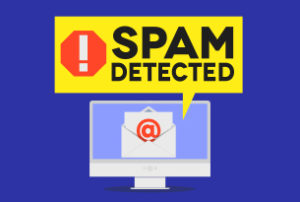Often times, the greatest insights happen at the intersection of two areas, and this is certainly true of the intersection between marketing and business development. Typically, what lives here are leads.
Marketers develop initiatives that build leads. Then sales “works” the leads, hopefully converting them into clients. This is true, in one form or another, in every industry.
Yet over the last several years, marketing has changed dramatically. Consider the impact of inbound marketing and content strategy, PPC advertising, social media and the web, mobile, marketing automation, and more sophisticated models such as the Relationship Curve. (See here and here.)
Sales has also changed: It’s less about old-style professional selling skills (see here and here), and more about the sophistication of account planning, research, process, CRM, and reporting.
An unintended – and very fortunate – byproduct of these changes is data: the question is what can be done with it. The answer is simple: identify leads that might not otherwise be visible through traditional marketing and sales activities. These are the hidden prospects that may nibble here and nibble there on the different marketing food that is offered, but never stay long enough to capture your attention.
Consider the touchpoints (and the underlying data) that is now available:
- Source of relationship
- Time on specific web pages
- Forms filled out
- Email opened
- Links clicked within emails
- Registration at events
- Attendance at events
- Email newsletters: subscription, double-opt-in, and unsubscription
- Social media activity: following/connecting, liking, retweeting, sharing, commenting.
- Interests
- Role within organization (decision-maker,
- Client (or member): current/past/not
- Client (or member) sales data, categorization, longevity, etc.
- Number of individuals within an organization that have engaged with your marketing
- External data, from census data to credit scores. And web-based metrics, from providers such as Klout.
The question is how to use this data. The answer is with Lead Scoring, which is both incredibly simple and incredibly powerful. This is how it works: Each time a person engages anywhere within your ecosystem, they gain (or lose) points. Then any person that has over a particular number of points are passed to business development for follow-up. That’s it.
There are ten key steps to implement Lead Scoring:
- The goal is to grow the organization by surfacing more leads – the goal is not to “use existing technology”. The only way to know if your tech is a constraint is by first defining the algorithm.
- Consider each segment that you wish to target, and then codify the journey the target segment typically takes to ultimately transact. For existing relationships, codify the journey they will take to their next transaction with you.
- At each touchpoint along their journey, what data is captured, and where is that data housed?
- How important is that data? Is it positive, or negative? Relative to other touchpoint data, is it more, or less important? For example, an unsubscribe is negative, but less negative than a lost client. A newsletter subscription is positive, but attending an event is even more positive.
- How long does that impact last? A day? A week? A month? Forever?
- Create your Lead Score algorithm. This is usually expressed as a set of rules.
- Examine your current technology to see if it can automatically pull data, and then calculate the score based on your algorithm. If your current systems are a constraint, then review the market for a system that can do the job (or, change your algorithm and accept limitations on the number of leads identified).
- Beta test the algorithm, along with variations.
- Develop a standard script and speaking points, and then train the team. A phone call that starts with “we have been watching you” is creepy.
- Monitor the lead score results to optimize the scoring algorithm and expose more hidden prospects.
To give a flavor for Lead Scoring rules, here are several examples:
- If industry is “X”, add 2 points forever.
- If subscribes to a newsletter, add 1 point forever.
- If unsubscribes to a newsletter, remove 1 point forever, and remove 3 points for 4 weeks.
- If retweeted one of our Tweets, add 1 point for 1 week.
- If registered for an event, add 1 point for 4 weeks.
- If attended our event, add 3 points for the next 2 weeks, and 1 point for the next 8 weeks.
- If a client, add 5 points forever.
- If receivables are current, add 1 point forever.
This week’s action plan: Even if you don’t have the systems in place, you still can work on the algorithm. This week, go through the first few steps: Codify the journeys, identify the data captured at each touchpoint, etc. If you just want to play around with the concept, then try this instead: are there one or two touchpoints that, if triggered, will more likely result in a lead? This week, use existing systems (internal and external) to see who might be flying under the radar, and reach out to them.











